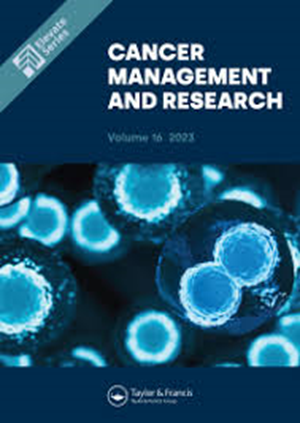在 mCRPC 治疗中整合 PARP 抑制剂:当前策略和新趋势
IF 2.5
4区 医学
Q3 ONCOLOGY
引用次数: 0
摘要
摘要:转移性耐阉割前列腺癌(mCRPC)预后不良。DNA损伤应答(DDR)基因在mCRPC中普遍发生改变,使其成为有希望的治疗靶点。聚(ADP 核糖)聚合酶抑制剂(PARPi)通过合成致死率,在 DDR 基因突变的 mCRPC 患者中显示出抗肿瘤活性。使用 PARPi 单药治疗的多项临床试验显示,在选定的 mCRPC 患者中取得了令人鼓舞的临床结果。最近,三项将PARPi与雄激素受体信号转导抑制剂(ARSI)联合应用的III期随机临床试验(RCT)显示,与单用ARSI作为一线疗法相比,PARPi在mCRPC患者中的抗肿瘤活性有所提高。临床获益在DDR改变(特别是BRCA1/2)患者中更为明显。有趣的是,无论 DDR 基因突变与否,都能观察到抗肿瘤活性,这凸显了 BRCAness 表型与雄激素受体阻断导致的 ARSIs 和 PARPi 之间的协同活性。在这篇综述中,我们讨论了所有3期随机对照试验(RCT)中PARPi联合ARSI的临床疗效和安全性数据,强调了患者选择策略,并根据临床试验数据突出了新趋势:PARP抑制剂、talazoparib、ARSI、DDR基因、HRD、转移性CRPC本文章由计算机程序翻译,如有差异,请以英文原文为准。
Integrating PARP Inhibitors in mCRPC Therapy: Current Strategies and Emerging Trends
Abstract: Metastatic castrate-resistant prostate cancer (mCRPC) is associated with poor prognosis. DNA damage response (DDR) genes are commonly altered in mCRPC rendering them as promising therapeutic targets. Poly (ADP ribose) polymerase inhibitors (PARPi) demonstrated antitumor activity in mCRPC patients with DDR gene mutations through synthetic lethality. Multiple clinical trials with PARPi monotherapy exhibited encouraging clinical outcomes in selected patients with mCRPC. More recently, three Phase III randomized clinical trials (RCTs) combining PARPi with androgen receptor signaling inhibitors (ARSIs) demonstrated improved antitumor activity compared to ARSI monotherapy in mCRPC patients as the first-line therapy. Clinical benefit was more pronounced in patients harboring DDR alterations, specifically BRCA1/2. Interestingly, antitumor activity was also observed irrespective of DDR gene mutations, highlighting BRCAness phenotype with androgen receptor blockade resulting in synergistic activity between ARSIs and PARPi. In this review, we discuss the clinical efficacy and safety data of the combination of PARPi plus ARSI in all Phase 3 randomized controlled trials (RCTs), emphasizing strategies for patient selection and highlighting emerging trends based on clinical trial data.
Keywords: PARP inhibitors, talazoparib, ARSI, DDR genes, HRD, metastatic CRPC
Keywords: PARP inhibitors, talazoparib, ARSI, DDR genes, HRD, metastatic CRPC
求助全文
通过发布文献求助,成功后即可免费获取论文全文。
去求助
来源期刊

Cancer Management and Research
Medicine-Oncology
CiteScore
7.40
自引率
0.00%
发文量
448
审稿时长
16 weeks
期刊介绍:
Cancer Management and Research is an international, peer reviewed, open access journal focusing on cancer research and the optimal use of preventative and integrated treatment interventions to achieve improved outcomes, enhanced survival, and quality of life for cancer patients. Specific topics covered in the journal include:
◦Epidemiology, detection and screening
◦Cellular research and biomarkers
◦Identification of biotargets and agents with novel mechanisms of action
◦Optimal clinical use of existing anticancer agents, including combination therapies
◦Radiation and surgery
◦Palliative care
◦Patient adherence, quality of life, satisfaction
The journal welcomes submitted papers covering original research, basic science, clinical & epidemiological studies, reviews & evaluations, guidelines, expert opinion and commentary, and case series that shed novel insights on a disease or disease subtype.
 求助内容:
求助内容: 应助结果提醒方式:
应助结果提醒方式:


